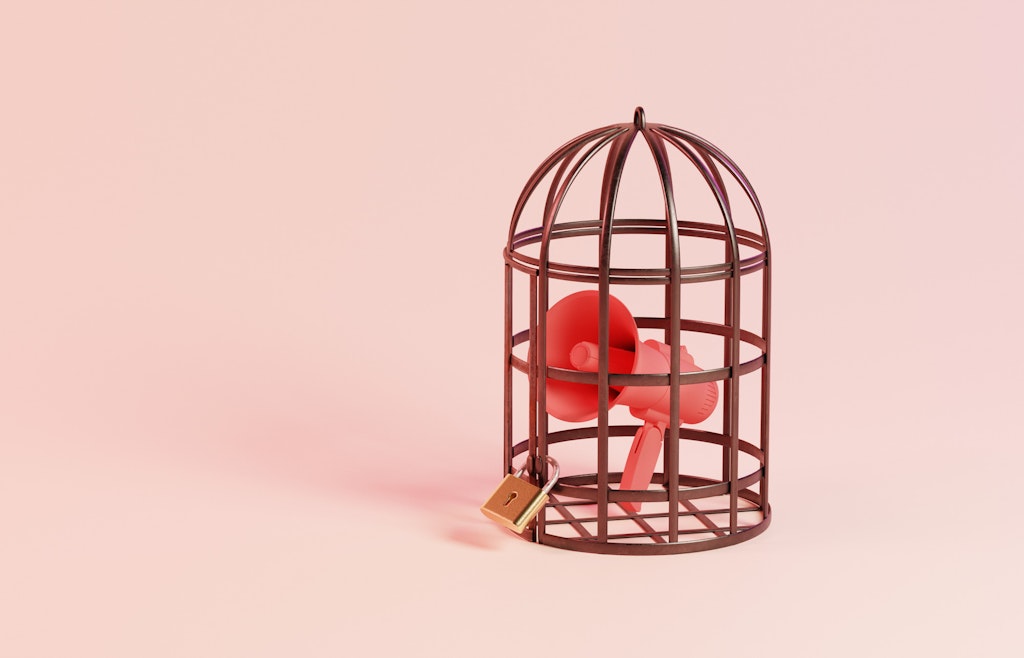High art
Serenhedd James heads to Burlington House for the RA’s summer show
At the end of Room Two at the Royal Academy a green cargo bike stands in solitary splendour among nearly 1,400 pieces of work that Yinka Shonibare has curated for this year’s delayed Summer Exhibition. I long for it to turn out later that on Sanctioning Day some delivery boy forgot his D-Lock and so hefted the thing upstairs before going off to find someone to sign for the goods, and then returned to discover that it had been cable-tied to a heating grille.
Two hundred years ago, the show was all about “the line”: the better-known artists lower down, where they could be more easily seen by the punters, and the newcomers hovering up in the gods. This year the theme is “Reclaiming Magic”; there is so much stuff crammed onto the walls of the RA’s piano nobile that some of the top-level stuff—literally, that is—is nearly impossible to see. Take a pair of binoculars, if you dare; failing that, it’s all available online.
The artists are drawn from the ranks of the inspired, the earnest, and the misunderstood
There are paintings and sculptures; sketches and architectural drawings; models and videos; pots and glasses; clothes and mixed-media items; more besides. Importantly, none of it is average; simultaneously, none of it will be to everyone’s taste. As usual the artists on display are drawn broadly from the ranks of the inspired, the earnest, and the misunderstood; this roughly translates as the superb, the good, and the mad.
In such a mixture there are delights to be found, particularly in the Lecture Room where many of the hybrids have a simple, child-like exuberance about them. That said, an exception might be made for Estin Thalassa by Cathy Pilkington (1278), which looks like a cross between a sickly octopus and a sex-doll writhingly and painfully whelping an alien. That may be the whole point, I suppose, but I preferred Conrad Shawcross’s mesmeric Patterns of Absence (1198) a few feet away.
Inevitably there are frustrations, too. With its strong colours and bold shapes, Nicholas Maddison’s Si’ (1138) is possibly one of the most striking inclusions, and yet the only way to see it properly at the far end of Room Nine is from the other side of the bookshop, next door, and behind a “no entry” sign. It may be some kind of inscrutable parable, or possibly Maddison clipped someone’s Bentley on Burlington Gardens. Either way, it deserves a nobler spot.
Just around the corner, Graeme Wilson’s Fugitive (1121) evokes a renaissance cardinal reading his breviary; sitting nearly at cornice-level in Room Seven, Natasha Michael’s Dignitary (932) looks like a smudged and startled van Dyck. Angela by Lucy Jones (513) is apparently not a portrait of Shirley Williams, while The Great Man by James Butler (287) is a 1974 sketch of W. G. Grace. It is an odd, if pleasing, entry; could it be a foil to the looming Britain in Dragon’s Shadow by Jason Locke (1109)?
Politics and art are never very far apart, of course – for better or worse
Politics and art are never very far apart, of course, and the RA is often in the vanguard – for better or worse, as demonstrated by recent events and its subsequent public apology to Jess de Wahls. Nevertheless, Shonibare steers an elegant course. In Room One works like George Floyd Remembered by Ian Wright (72) and Bee Dred’s Black Lives Matter (76) remind us of the context in which this exhibition was curated; they dominate its opening but not the rest, although other similar themes pop up along the way, just in case anyone had forgotten.
There is something for everyone here, with plenty of space for frivolity, and the perennial and often exhilarating opportunity for admiration and bewilderment in equal measure. Colin Cameron’s Families, Picking Noses (406 & 407) leads the field for the latter. As a distinguished contributor to the disabled people’s movement, he says that he finds “painting pictures of nondisabled people with their fingers up their noses liberating”. He also confesses that he was “astonished” to find his paintings selected; this sounds initially refreshing, although if you happen to have a penchant for digital nasal excavation, then they can be yours for £675 apiece.
Just above, Carmen Herrera’s rhomboid De Un Dia A Otra Dia (409) sits in profoundly elegant juxtaposition. Herrera is an Honorary RA, so it is stylishly not for sale. Almost everything else is tagged up, though, and as a jobbing hack myself I have a particularly soft spot for the lithographers and others who are in a position to be able to offer numbered editions, rather than a single product. Why sell it just the once? We’ve all got to eat.
In a similar spirit I approached Carla Gaita’s Please Enter Your Pin (1151): a small voodoo doll with the paper face of the Prime Minister. His visage is detachable, so presumably there are Barbie-style options in the offing, depending whom Gaita regards as Transgressor Number One in any given week. Roll up for your voodoo Duke of York; your voodoo Germaine Greer; your voodoo Dominic Raab, with optional full-bottomed wig for the more traditionally-minded psychopath. Perhaps she’ll give me a cut.
Other enterprising artists go for the more hopeful and traditional one-off approach, and evidently not without success. I thought that Angela de la Cruz’s Loop (373) was little more than a bit of sagging oilcloth, four-feet square, and painted yellow; but it must be very good, because it is priced at £48,000. Is it art? It’s on display at the Royal Academy, so I suppose it must be. Helpfully, it’s also right next to the bar.
The Summer Exhibition at the Royal Academy of Arts runs until 2 January 2022.
Enjoying The Critic online? It's even better in print
Try five issues of Britain’s most civilised magazine for £10
Subscribe














